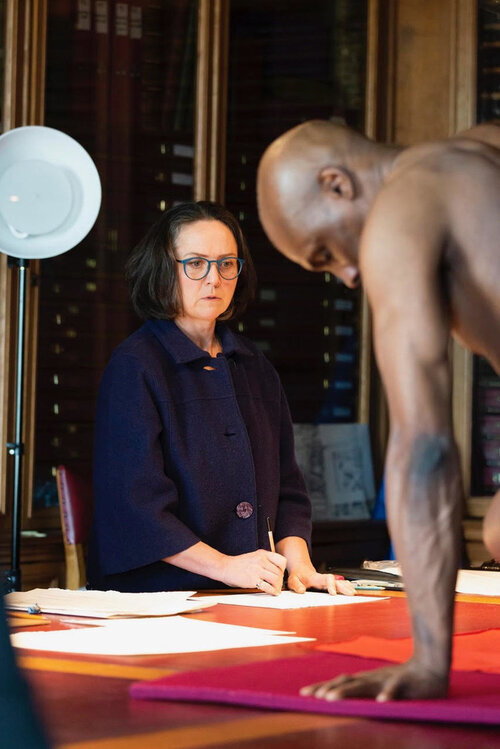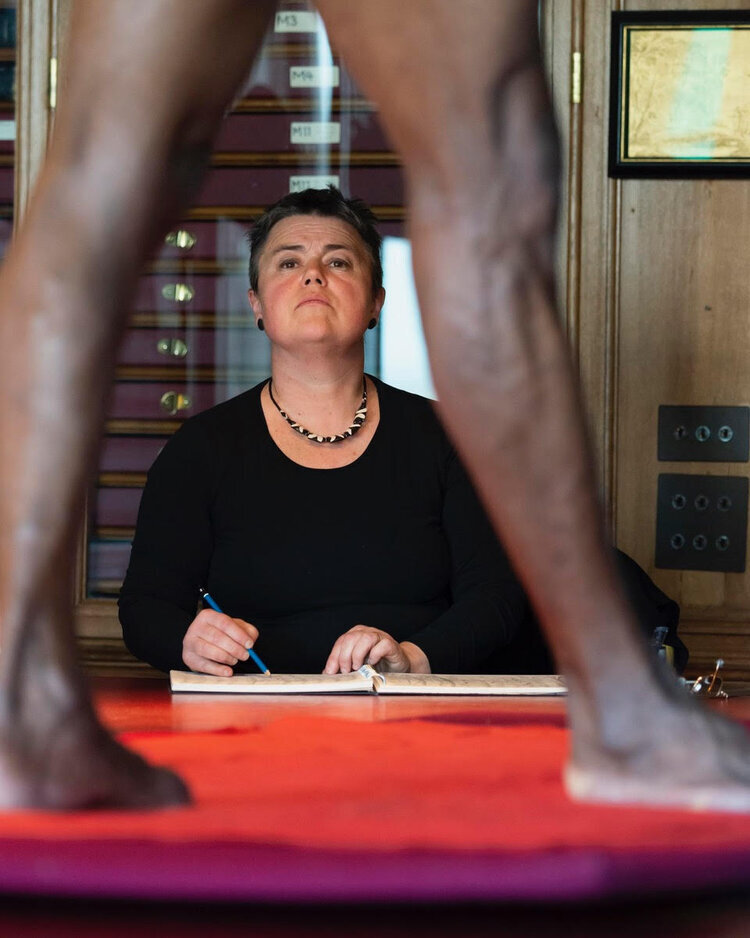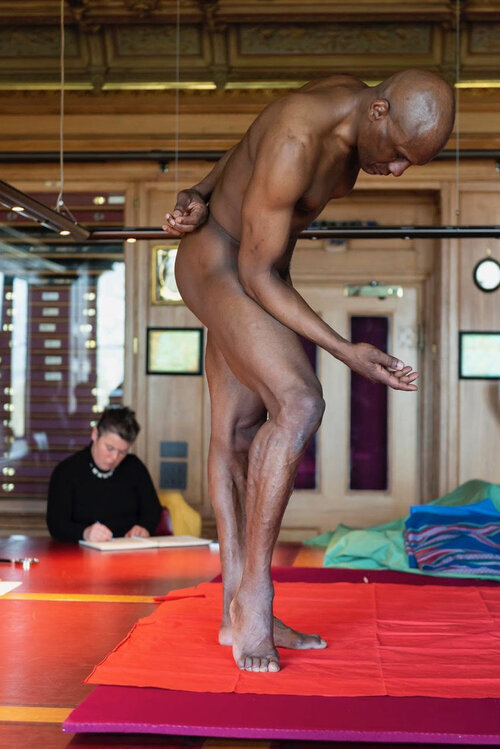Historic
Prints and Drawings Study Room, British Museum
At the British Museum, Courtauld Institute of Art, Royal Collection Trust and Windsor Castle.
Drawing is fundamental to artistic practice, to creative thought, problem solving, communicating ideas and as a way of learning how to see.
The historic residency took place over four days in March 2019 at the British Museum, the Royal Collection Trust at Windsor Castle and the Courtauld Institute of Art. The residency gave the 10 participating artists access to the collections and succeeded in inspiring them to closely observe observe the qualities, techniques and composition of important drawings of the past, selected and introduced by the collection’s drawings curator with a focus on drawings of the body where possible by women artists and sculptors.
The artists were invited to copy their chosen drawings and later translate the techniques studied in a life drawing session lead by an experienced drawing tutor in the glorious rooms housing the collections. The institutions welcomed practising artists into their collections, the presence of which are dwindling.
Historic Collections of Old Master Drawings held at the British Museum, Courtauld Institute of Art Gallery and the Royal Collection in Windsor
A group of 10 invited artists were offered the opportunity to observe the qualities, techniques, composition and other aspects of important drawings of the past, with a view to raising awareness of this vital tool in the artists’ practice. Artists were challenged to observe and copy the Old Masters’ drawings and later translated the techniques studied in a life drawing session lead by an experienced drawing tutor. This first residency aimed to inspire the artists to spend time looking at drawings of the past more critically and to apply their experiences and their observations in their own practice.
The residencies opened with the privilege of a special expedition to the Museum’s basement storage to observe and draw the rarely seen Townley Collection of Classical Sculpture, where artists were free to observe and draw. Charles Townley (b.1787) was a Lancashire Catholic who, when in Rome, became an avid collector of antiquities. On his return to England filled his house in Park Street, Westminster (Queen Anne’s Gate) with sculpture. After his death, the collection was acquired by Act of Parliament for the British Musuem. Its fame and importance were eclipsed by the arrival of the Elgin Marbles and the collection has remained largely undisturbed since then.
In the Study Room, works by Rubens, David Hockney, Ingres, Rembrandt, Celia Paul, Barbara Hepworth, Auerbach, Sylvia Gosse, Henry Tonks and William Blake were selected and introduced by Sarah Jaffray, Bridget Riley Foundation lead educator. Jo Volley of Slade School of Art led the life drawing session.
Courtauld Institute of Art, Vernon Square
Ketty Gottardo, Martin Halusa Curator of Drawings at the Courtauld Institute of Art, generously introduced the Courtauld’s collection as well as her selection of drawings available at its temporary home in Vernon Square. The drawings included notable works by Géricault, Guercino, Constable and Tintoretto. Tutor Dilip Sur, from the Royal College of Art, then led an observational drawing session focussing on techniquesfollowed by a life drawing workshop with model Asma. It was an intense and spiritual experience taking the artists back to the primordial functions of drawing. The day closed with drawings by moonlight, from the soul.
British Museum Collection
After an introduction to the British Museum’s collection, Sarah Jaffrey, Project Officer for the Bridget Riley Art Foundation at the British Museum, presented the artists with a selection of drawings including pieces by Michelangelo and Rubens. Tutor Jo Volley from the Slade School of Art led an observation drawing session during which the artists copied the drawings that most inspired them. At the Townley Collection, Celeste Farge, Prints and Drawings Cataloguer (Paul Mellon Centre), and Kate Morton, Illustrator, talked about the Townley collection as well as its representation throughout Art History and invited the artists to explore the collection with a guided tour. For the last workshop, Jo Volley lead a life drawing session, with model, inside the Prints and Drawings Room of the British Museum which gave the artists the opportunity to study the body in an unusual setting.
Print Room at Windsor Castle, Royal Collection Trust
Martin Clayton, Head of Prints and Drawings at the Royal Collection Trust, Windsor Castle, noted the absence of requests to view the collection from practising artists. He embraced the Body and Place and facilitated our entry into the Castle. Complying with the strict dress code, security and punctuality requirements, our group was welcomed into this extraordinary collection. Martin Clayton was intrigued by the idea of bringing a model into the Print Room, for the first time in his stewardship, and suggested that the library table was used as the model’s base. He introduced the collection as a whole focusing on its electic nature and on the drawings he had selected for the session. They demonstrated the differences of style between North and South Europe as well as the diversity of techniques. He generously answered the questions from the group which ranged from intricate conservation queries, stylistic considerations and the use of different materials from silverpoint to chalk. To see works by masters such as Leonardo and Raphael at such proximity and not under glass, was a unique experience. Tutor Rebecca Cartwright de Fontenelle led an observational session followed by an intense life drawing session with a former dancer turned model of such entrancing musculature that seemed to have risen from the pages of the drawings themselves. We were treated to tea and sandwiches and a private tour of the collection at Windsor.







